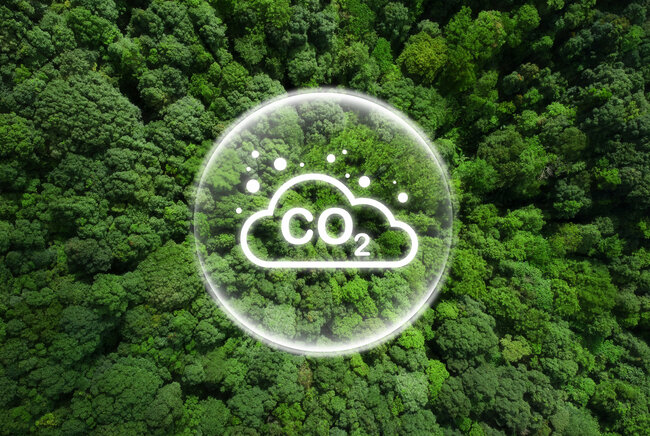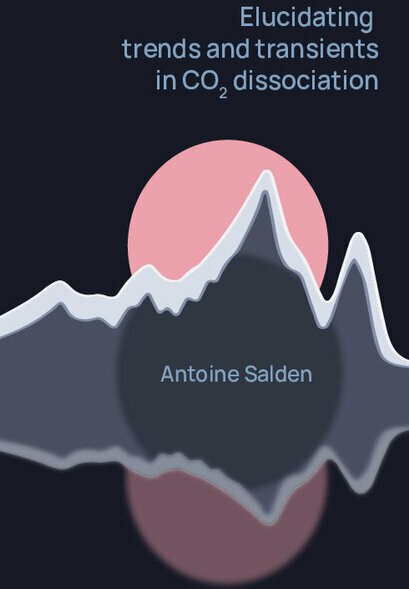Elucidating trends and transients in CO₂ dissociation
Antoine Salden defended his PhD thesis at the Department of Applied Physics and Science Education on April 19th.

The adoption of renewable energy sources in favour of fossil fuels has been gaining momentum in recent years. However, as the share of renewable energy in the energy mix increases, new challenges arise, stemming from the short-term and seasonal variability of many of these sources. Effectively storing a fleeting surplus of energy, to compensate for a later shortfall in production is essential towards solving these issues. Paradoxically though, CO₂ may play a key role in realising this solution through the use of plasma-catalysis to create more complex hydrocarbons from CO₂ at moments when there is an energy surplus. For his PhD research, Antoine Salden explored processes occurring in CO₂ containing plasmas using techniques with high resolution in space and time.
In his research, Antoine Salden primarily used these techniques to investigate a nanosecond pulsed discharge, a type of discharge that creates a harsh, rapidly evolving environment that can efficiently achieve a high degree of CO₂ conversion. In such a challenging environment, such techniques are crucial to investigate the large changes of local conditions in space and time.
Exploration of changes
First off, the evolution of parameters such as the electron density and gas temperature are established by Salden by analysing the spectrum of the spontaneously emitted light by the discharge.
Building upon these results, UV laser light was used to induce particular emission (from the hydroxyl radical, formed by adding a trace amount of water to the plasma) in the plasma, which enables measurement of the evolution of the dissociation degree.
From these results, Salden showed that CO₂ conversion occurs on a timescale that is at least an order of magnitude slower than the discharge pulse itself. This indicates that it is the interaction between excited molecular states that is responsible for the high degree of dissociation in these discharges, rather than direct impact by energetic electrons.
Furthermore, by adjusting the time between pulses in these pulsed discharges, it is possible to couple energy more effectively into these processes, increasing the efficiency for similar achieved output.

Experiments
Further experiments by Salden and his colleagues shifted the focus towards the plasma-surface interaction by investigating the ground state density of the hydroxyl radical during plasma-enhanced atomic layer deposition using the same UV laser light.
The locally measured density in the vicinity of the surface was compared to the trends in spontaneous emission of excited states of CO and OH that are formed under exposure of an organometallic precursor to an oxygen plasma.
These laser-based measurements allowed for the decoupling of the local environment from the plasma bulk, indicating that OH is formed primarily in the plasma from surface reaction products, that have themselves diffused away from the surface.
Open database
In addition to these experiments, Salden introduced an open database platform with experimental data on plasma-catalysis for CO₂ conversion (https://db.co2pioneer.eu).
Based on existing data in this database, an appraisal was made of the state-of-the-art performance across a wide range of experiments. This showcases the clear use for such a database in the field, not only to aggregate, but also to provide context to data that is obtained in vastly different experiments.
One of the key points highlighted by Salden is a need to develop a more fundamental understanding of the interaction between plasma and catalyst, based on new techniques and criteria that are suitable to test the synergy of both.
Also in this instance, local, time-resolved diagnostics may play a key role, but their implementation will be challenging in the future.
Title of PhD thesis: Elucidating trends and transients in CO₂ dissociation. Supervisors: Erwin Kessels, Paolo Tosi, and Richard Engeln.